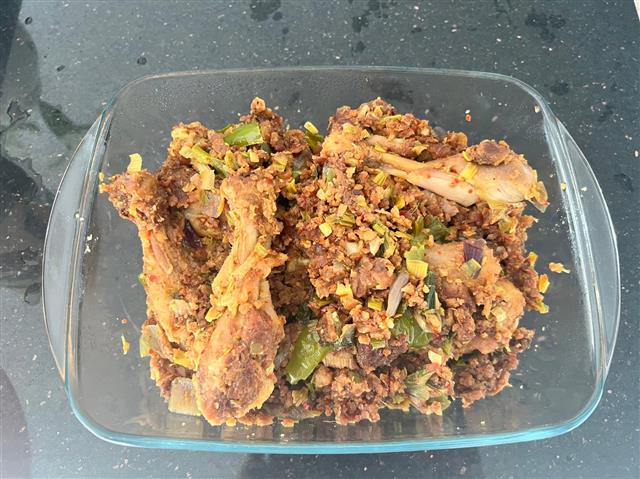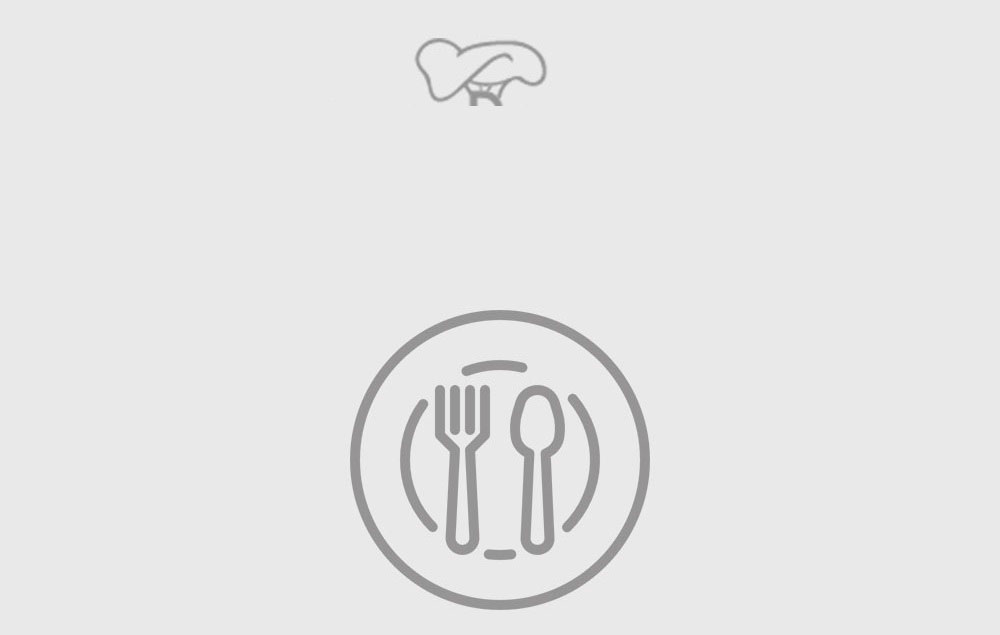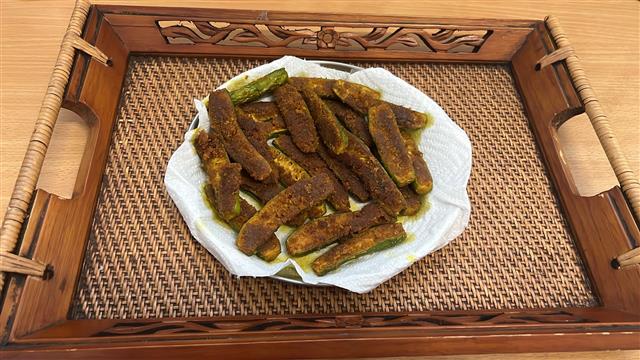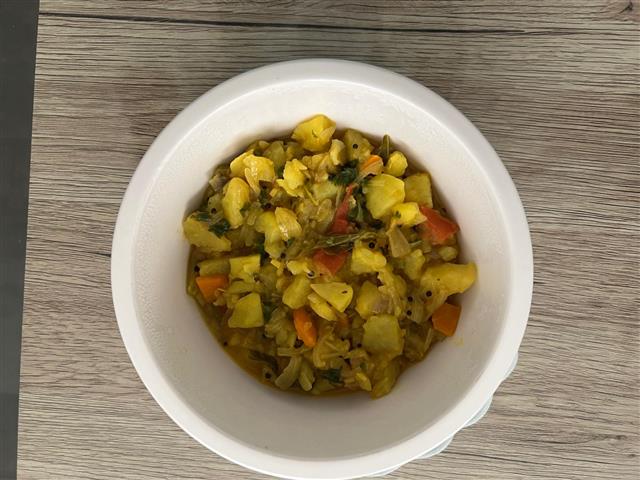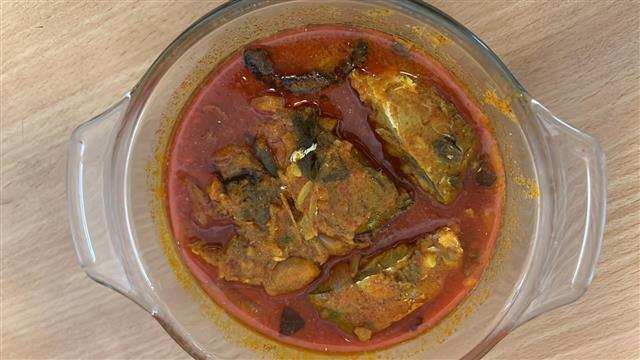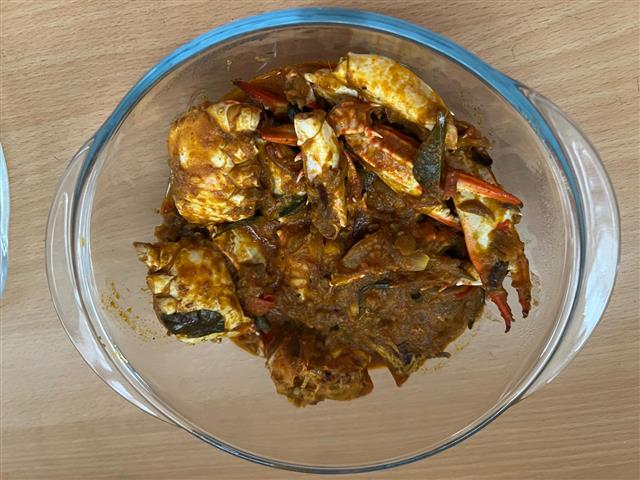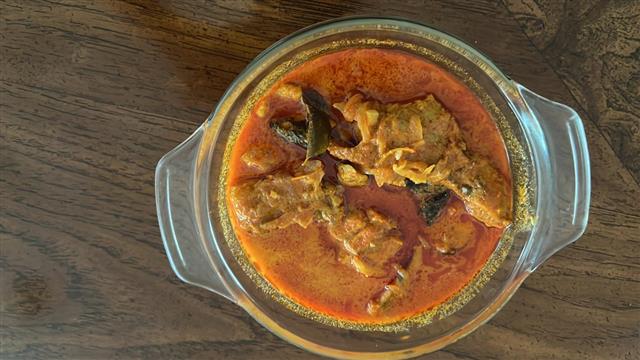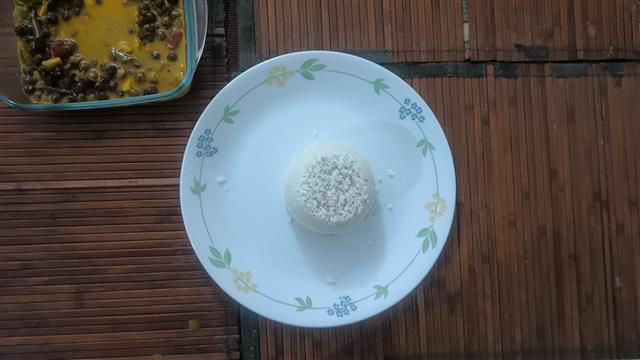
Bread Upma
(4 reviews)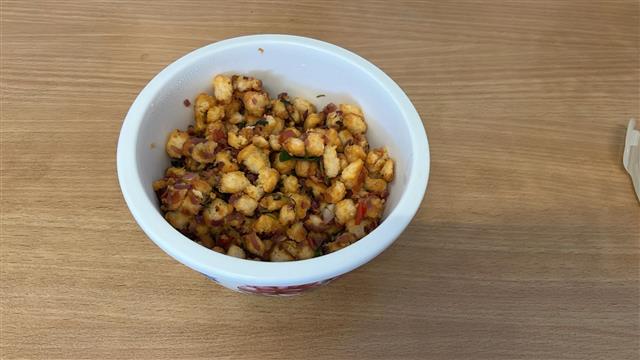
**Bread Upma ** is a simple, spicy, and comforting dish made from leftover bread slices tossed in a medley of vegetables and spices with a touch of ketchup for tang.
Often cooked with a dash of ghee, it's a beloved breakfast or tiffin choice in many households. This Kerala-style Bread Upma, like many dishes from this cuisine, is simple enough for beginners, but it packs the kind of flavour that only "home food" can deliver.
Ingredients
Directions
- Cut 4 slices of bread into small cubes, removing the crusts
- Sauté 1/2 onion in 1 tablespoon of ghee and 1 tablespoon of oil until soft.
- Add 1 green chili (chopped) and 1/2 tomato (chopped) and sauté well.
- Add 1 tablespoon of tomato ketchup and a handful of chopped coriander leaves. Stir to combine.
- Add the bread cubes, stir well, and cover. Cook on low heat for 2 minutes.
Cooking Tips
• Use slightly dry/stale bread for best texture — it soaks up flavors without turning mushy.
• Remove the crusts for an even softer bite (optional) — helps achieve a pudding-like mouthfeel).
• Ghee and oil combo adds aroma and depth — ghee for richness, oil for browning.
• Cook on low flame after adding bread — to avoid burning and allow the flavors to absorb gently.
• Add a splash of water or milk — if the mix feels too dry, especially when using dense sandwich bread.
How to Serve
• Serve hot or warm with a side of coconut chutney, mint chutney, or even a fried egg on top.
• Serve with cup of Kerala-style milky chai (with ginger and cardamom).
• Serve as a light dinner or lunchbox snack — tastes good even at room temperature.
The Story Behind Bread Upma
Bread Upma is a quick, savory dish made by tossing cubes of bread into a spiced onion-tomato masala base. You can call this an Indian stir-fry which is often given a final dollop of ghee, ketchup, or a squeeze of lime.
Though not part of classical Kerala cuisine, it has earned its place in modern Malayali kitchens as a beloved breakfast, tea-time snack, or light dinner.
Its texture is unique, soft in the center with slightly crispy edges, and doused in warm masala.
In Kerala, Bread Upma often features a subtler flavour profile, using green chilies, mild onions, curry leaves, and ghee or coconut oil. The addition of tomato ketchup, much like the American way of sprucing up a dish, gives it a sweet-and-spicy twist.
While traditional upmas rely on rava (semolina) poha (flattened rice) or vermicelli, this version celebrates bread as the unexpected hero, making it both economical and emotionally familiar.
Bread Upma doesn't have centuries of culinary lineage, and is as modern as it gets. This dish emerged in Indian homes as a delicious response to a very practical problem: what to do with leftover bread.
In many homes, especially in cities, bread often finds its way to the breakfast table. But as day-old slices piled up, home cooks turned creative. With the same masala base used in vegetable stir-fries or egg curry, the bread was added in, giving rise to what we now call Bread Upma.
In our home, my mother (as a working woman) was game for anything easy and anything “fusion.” Her version was soft and spicy enough, and filled with the comfort of home-cooked love. Over time, Bread Upma became one of those dishes that didn't need a reason. Whether made in a rush before school or savoured as a light dinner after heavy snacking, it always hit the spot.
Bread Upma is that bridge that connects Keralites from rural to urban, from small-town kitchens to modern apartments, from moms to gen Z alike. It's popular because the essence is about making do, and turning something ordinary into a bite of something memorable.
Pro Tips for Perfect Results
→ Tear bread by hand instead of cutting to get absorb the masala.
→ Use milk bread or sandwich loaf as it holds better structure than flatbread types.
→ Add a dash of lime juice or vinegar for brightness, especially if skipping ketchup.
→ Toast bread lightly before adding for a slightly crispy exterior.
→ Sprinkle ghee before serving for a tasty finish.
Bread Upma Variations
With vegetables: Add chopped carrots, capsicum, or green peas for more nutrition.
Egg Bread Upma: Add beaten eggs to the masala before tossing in the bread for a protein-rich twist.
With curry leaves and mustard: For a traditonal tempering style.
Cheesy Bread Upma: Add grated cheese at the end and cover till melted—kids love this.
Sweet-savory mix: Add a pinch of sugar and raisins for a North Kerala bakery-style flavor.
Diet-Friendly
Vegan: Skip ghee or use vegan butter. Replace bread with dairy-free options.
Gluten-Free: Use gluten-free bread—just be gentle while tossing as these are more delicate.
Low-fat: Skip ghee and reduce oil; sauté with just one tablespoon if needed.
High-protein: Add panner cubes or roasted peanuts along with the masala for more protein.
Storing & Reheating Tips
→ Storage: Best served fresh
→ Fridge: refrigerate for up to 1 day. Store in an airtight container to prevent it from drying out.
→ Reheat: Reheat gently in a pan or microwave, sprinkling a few drops of water before heating to soften the bread.
Common Mistakes to Avoid
→ Overcooking the bread: It can turn hard or rubbery ; Toss gently and cover for even steaming.
→ Using very fresh, soft bread: It breaks apart and gets mushy. Slightly stale bread holds better.
→ Not sautéing the onions well: Undercooked onions leave a raw taste—cook till soft and slightly golden.
→ Skimping on ghee or fat: Bread needs a little richness to feel indulgent and satisfying.
Frequently Asked Questions
- Can I use any type of bread for Bread Upma?
Yes! While regular white bread is commonly used, whole wheat, multigrain, or even leftover pav or sandwich bread work well. Just make sure it's not too soft.
- How do I prevent the bread from becoming soggy?
The key is to toast or lightly dry out the bread before cooking, or use day-old bread. A quick toss on low heat after mixing helps keep the texture.
- Can I make Bread Upma without onion and garlic?
Definitely. You can skip the onion and garlic. Add some hing ofr the garlicky flavour. Add grated carrots, bell peppers, or boiled peas for extra crunch.
- Is Bread Upma kid-friendly?
Yes! You can make it less spicy by omitting green chillies and adding tomato ketchup or a pinch of sugar.
- Can I prepare Bread Upma in advance?
It tastes best fresh, but you can prepare it a couple of hours ahead. To reheat, sprinkle a few drops of water, cover, and steam for a minute or microwave with a damp paper towel to retain moisture.
Equipment Needed
→ Frying pan or kadai
→ Chopping board and knife
→ Spatula for gentle tossing
→ Lid to cover the pan
→ Optional: mixing bowl
